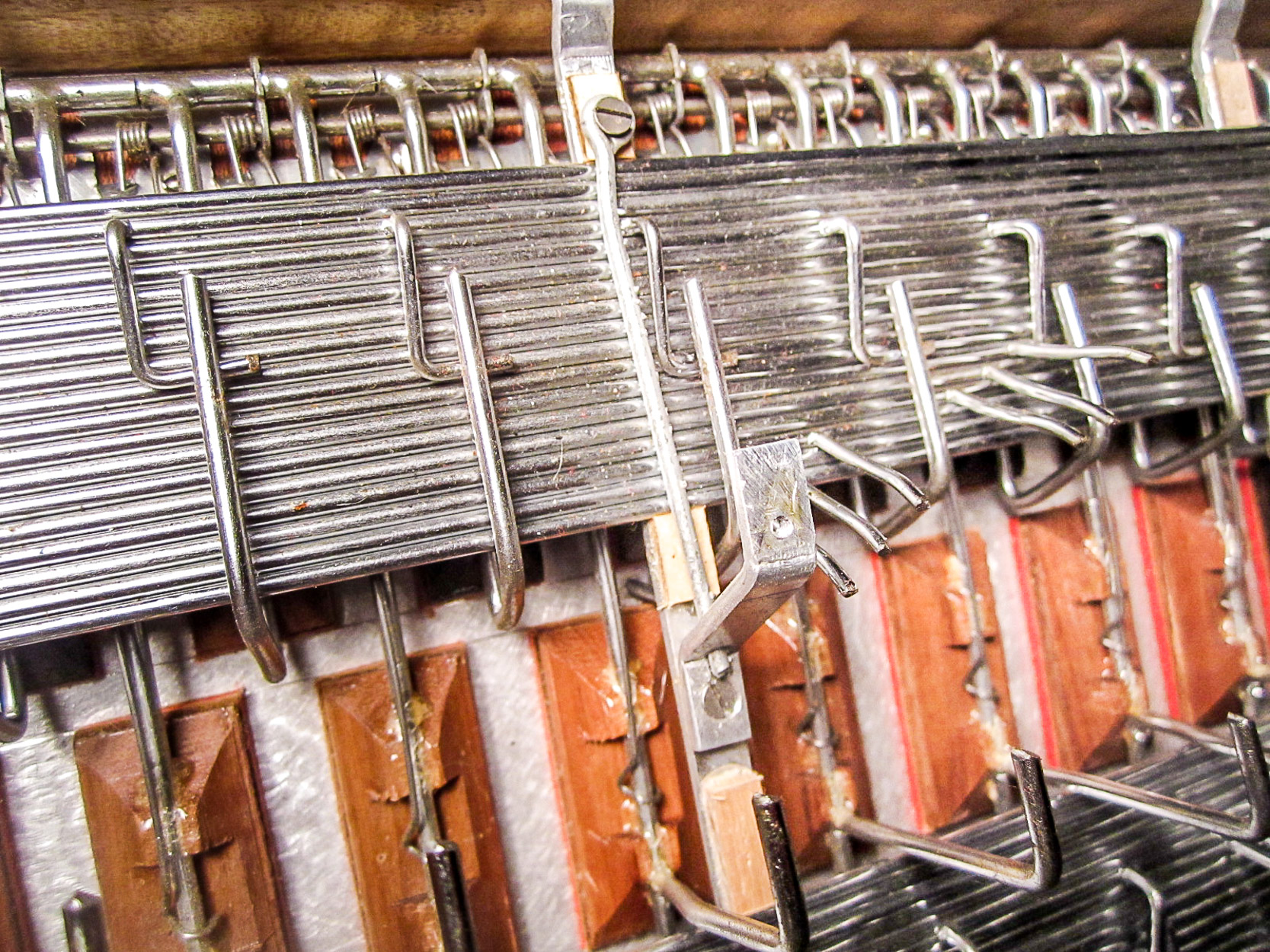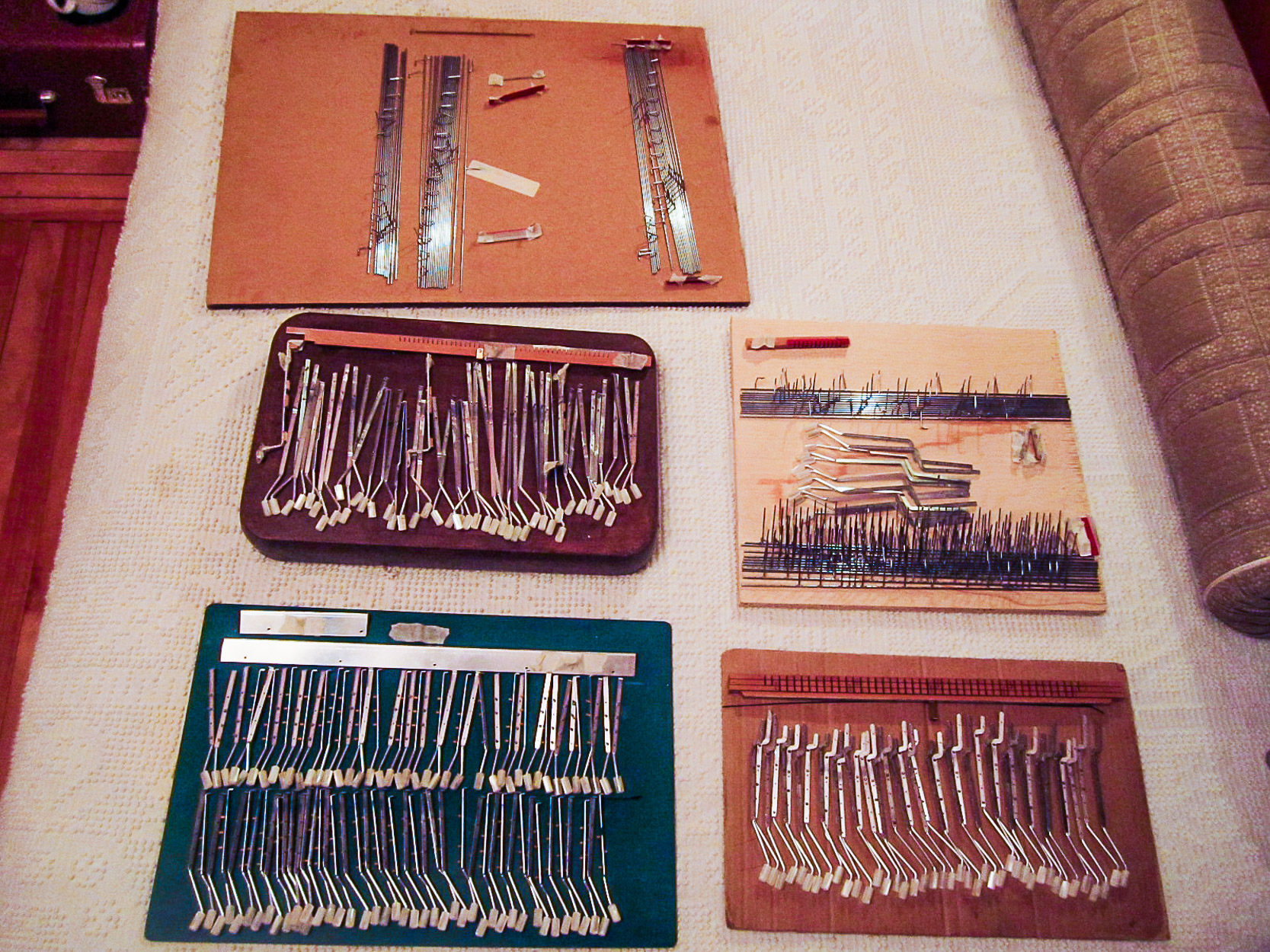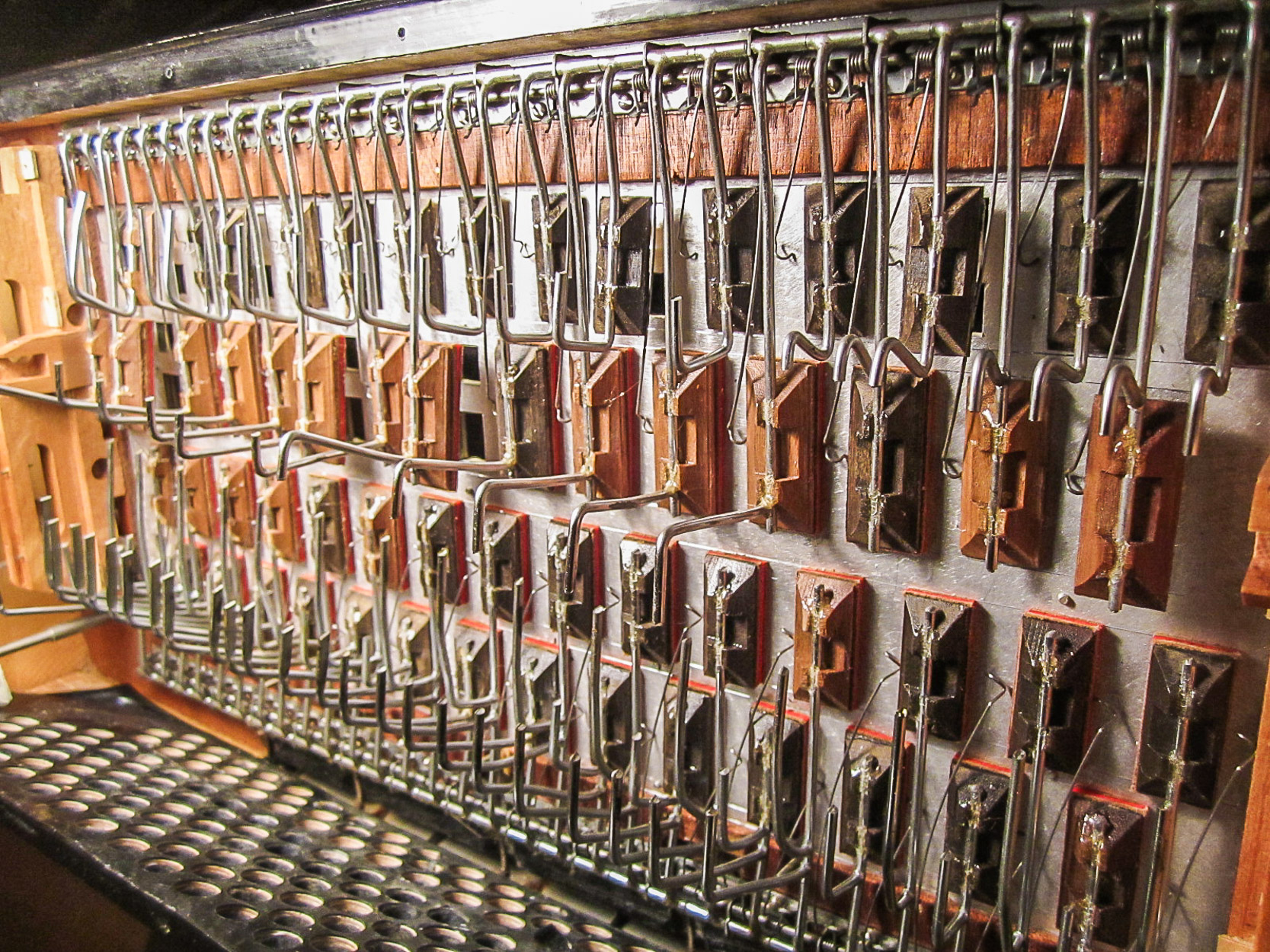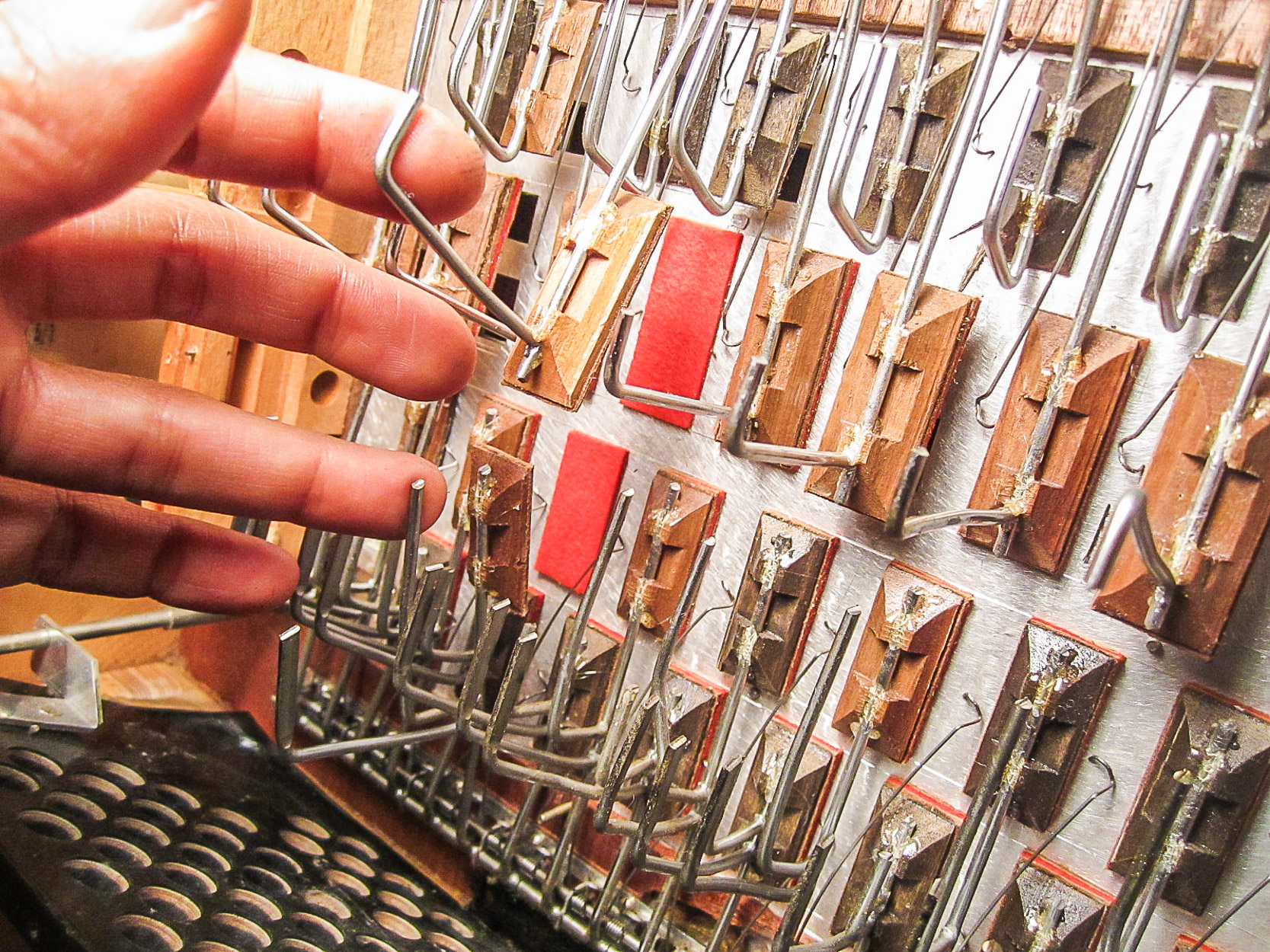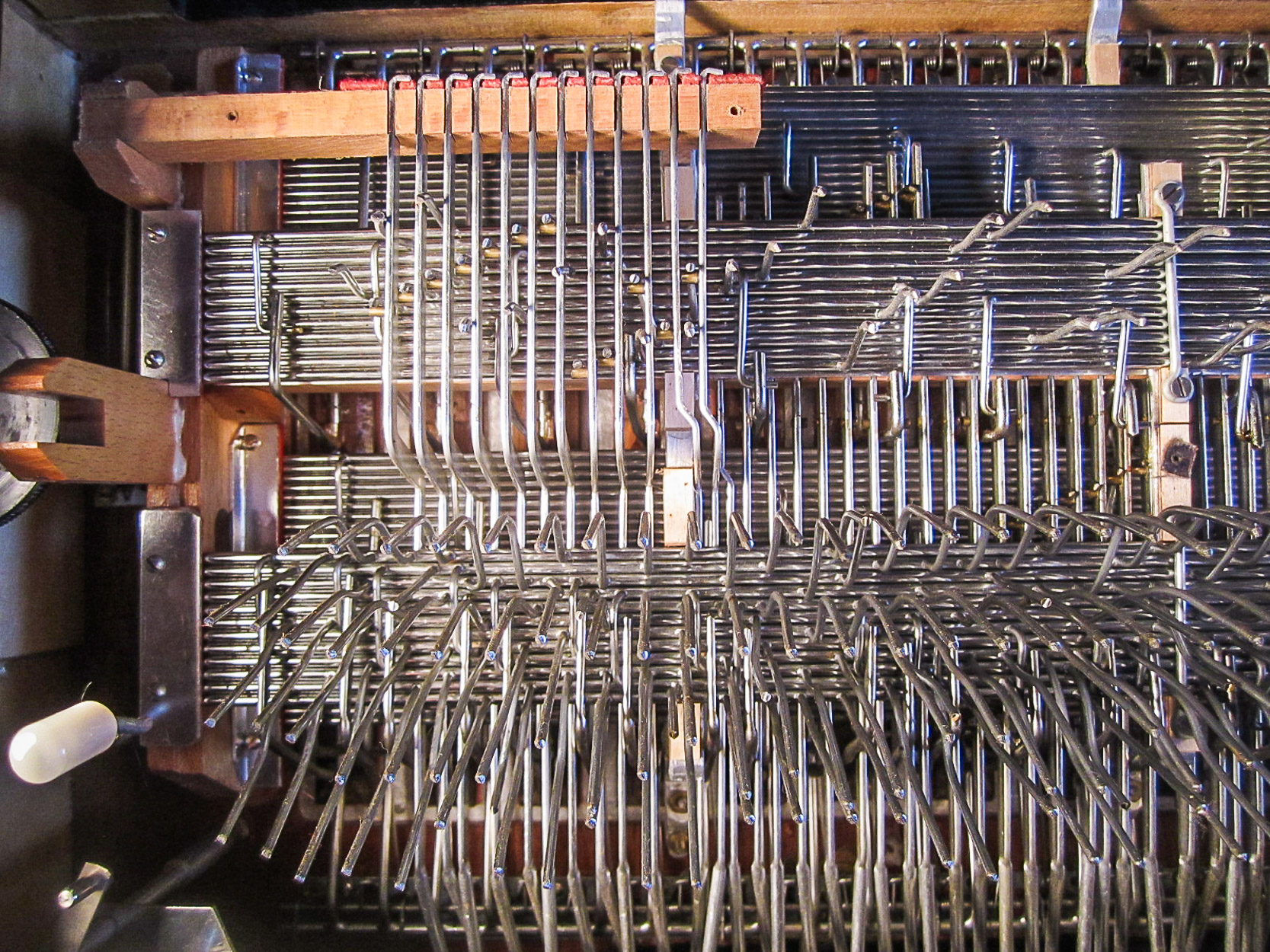April 16, 2016
Just a little lesson I want to share. Those of us that have an issue with our accordions sometimes wonder if we can fix it ourselves or wonder if we should pay for the services of an expert. This decision for most people is not an easy one to make. Yes, acoustic accordions are not “rocket science” to take apart and in most cases, pretty easy to fix. In some cases, we need to take a little step back, evaluate our own skills and confidence level in being able to diagnose a problem and fix it properly. “Properly” being the key word here.
My own accordion displayed a few simple symptoms and after taking a look myself and taking some basic steps at trying to diagnose these issues, I decided to pass it on to an expert. I am soooooo happy that I did!
It turned out that the issue was way more involved than I realized! Something simple like a few sticking buttons on the bass and sticking reeds on a few bass notes turned out to be the felt becoming dislodged off the “flaps”, coming loose and even in some cases, sticking to the reed block floor and contaminating it with glue. Again, not a big issue… unless you have a monster 185 button free bass accordion and zero prior experience.
I decided to take the extra step and have the felts on all 185 bass buttons replaced and because the entire bass assembly needed to be completely disassembled, parts replaced, and reassembled, this turned in to an approximately 10 hour job for someone with years of experience! Had I attempted to do it, it would probably have turned into a 100 hour job (lol), and still not been assembled properly and maybe even tossed in a few damaged reeds and several bent rods in the process, making something relatively easy, one huge pain of a job and a lot more costly to have someone fix the main issues and my own blunders on top of things!
So, what I am trying to share is to please try to be honest with your skills and abilities and if there is the smallest bit of doubt, leave it to the pro to fix for you. Yes it’s going to cost more than if you did it yourself, but if your instrument has great sentimental or market value (or both?), and your experience level lower than what is required to do the job properly… it is just smarter to find yourself a good repair person and let them handle it for you.
In that last area, I must admit to being very lucky. I found myself not only someone with many years of experience fixing accordions, but someone with a strong work ethic of always giving quality work with a guarantee and also, at the same time, being what I feel is extremely reasonable with their pricing.
Right now, my Hohner Morino VI N is awaiting the completion of one other job in front of it before it gets the attention it deserves, and I am looking forward to getting it back in full functional condition.
Now, here is a surprising thing… I am actually feeling little pangs of MISSING this accordion because it is not in my possession, something that I never felt even after not having seen the darn thing for over 25 years! Maybe it’s because I want to finally start playing and practicing, or maybe it’s some other reason, but having these feelings is surprising to me!
All in all, I am happy to be looking forward to starting my journey back in to music with a properly functional instrument. Here’s to getting it back as soon as possible.
April 27, 2016
In another post I discuss having the Hohner fixed and how even my chosen professional is having challenges with my accordion. I am glad that I decided to start practicing with the Elka. As of today, I still do not have the Hohner back as of the last posted date. Seems there were more issues with a few more sticking bass notes, a several treble reeds not playing or playing badly out of tune.
My poor Morino VI N requires more attention than was first evident. I think that once this is sorted out and I have the accordion back, I am going to consider having the accordion completely tuned at a later date. For now, I need it back with the greatest of issues resolved.
In the meantime, I have at least started playing for the last few days and can put those initial few hours under my belt, because as I am discovering, I am basically starting from scratch. Here’s to a little grim determination. 🙂
Here are a few pics of the “innards” of my Hohner from the technician:
August 29, 2016
It seems that there are a few things about my Hohner Morino that I would prefer not knowing, but it does explain a few things. First, during the years of this model, it was not Hohner that made them, but Excelsior! Second, Excelsior did not do their best work on these accordions. Seems they made a manufacturing error with them causing the glue to seep through the felts over time (and temperature changes), causing exactly the kind of errors that basically forced me to need all the felts on the left hand to be changed! So far, the right hand is working perfectly, but it explains a few things.
Pigini provided this information. I’ve personally done a loose translation of the pertinent part of this page where they speak about the Hohner Morino N series of accordions:
Morino N Series 1968 -1983: The Morino N models were built in Italy by EXCELSIOR (today PIGINI).
In professional circles Morino N is often called the “Klebemorino” (rough translation “adhesive, gooey or sticky Morino”). Because in this series one found a very common problem, that being sticking keys and bass buttons.
Pressing the button down, you can feel semi-stuck key, then a breakaway, once you overcome the adhesive, there is a snap as the button opens. This effect can occur on both the bass and treble sides. There are used Morino N accordions that do not have this issue or where it is almost not noticeable. Some instruments only stick on the right hand, some on the bass and others on both hands. Some used instruments don’t display this sticking effect at all, but that does NOT mean that it cannot occur at a later date, because the adhesive effect is time and temperature dependent.
Basically the cause of the key sticking is due to a manufacturing defect.”Filzleder” keys (the leather and felt), the felt layer was applied to the leather layer, soaking it, and then glued together. The sticky keys is caused by an adhesive that penetrates the leather layer, eventually exiting and the leather thus sticks to the aluminum base. Sometimes, after pressing the button several times, the effect of the key sticking may disappear but it always returns a short time later. Therefore, one should warn potential buyers of a Morino N accordion, that after prolonged periods of time, this will happen.
Solution: The only solution here is to replace all the felts of the treble and bass keys completely. When buying a second hand N Morino, it should therefore be completely verified for this issue and all felts replaced on the treble and bass sides. One should pay extra careful attention to perfect air-tightness because replacing the Tonklappenbelege (sound damper coverings), is one thing, but an accordion with Cassotto that is properly sealed is an entirely different matter and so this repair is a very costly affair – if it is carried out professionally. And it should be done by someone very competent, else air leaks will be in evidence.
It is important to not use the old “Talkum trick” (talcum trick, or trick to use talcum powder to reduce the sticky keys).Frequently sellers try to unstick the keys using talcum power, which of course pollutes the reedplates and as a result, the powder is distributed throughout the instrument, requiring even more work to fix. The way to verify that this was done is simple: When removed the front Grill simply dragging a sound damper flap together with the rubber connector from Klavishebel (keyboard lever), and looks at the leather side. The leather feels very smooth, muddy or slightly sandy and the face of the leather fibers while moving will not be individually glued together but remain loose, or you might see traces of talcum powder, that is the sign that guarantees a “Klebemorino”.
With this knowledge, you may choose to pass on the purchase or negotiate a lower price accordingly. If you ever see a “Morinoschneppchen” (Morino “super deal”), for a very low price, chances are good that it is a “Klebemorino”. There are also many Morino N accordions out there where after several attempts at being repaired, give you the feeling you are playing on an air pump instead a precision instrument. That does not mean that you cannot find a well preserved Morino N on the used market, it just means that this particular instrument was very likely repaired by authorized personnel in a professional accordion workshop. That said, the Morino N will usually still have a lower price than a Morino S.
Surprising. So the Hohner VI N was built by Excelsior in Italy… seems there is a bit of Italian in my German Hohner! Now, it doesn’t change the way I feel about my accordion at all, I still love it all the same and it is no less special to my heart than it was before. 🙂
